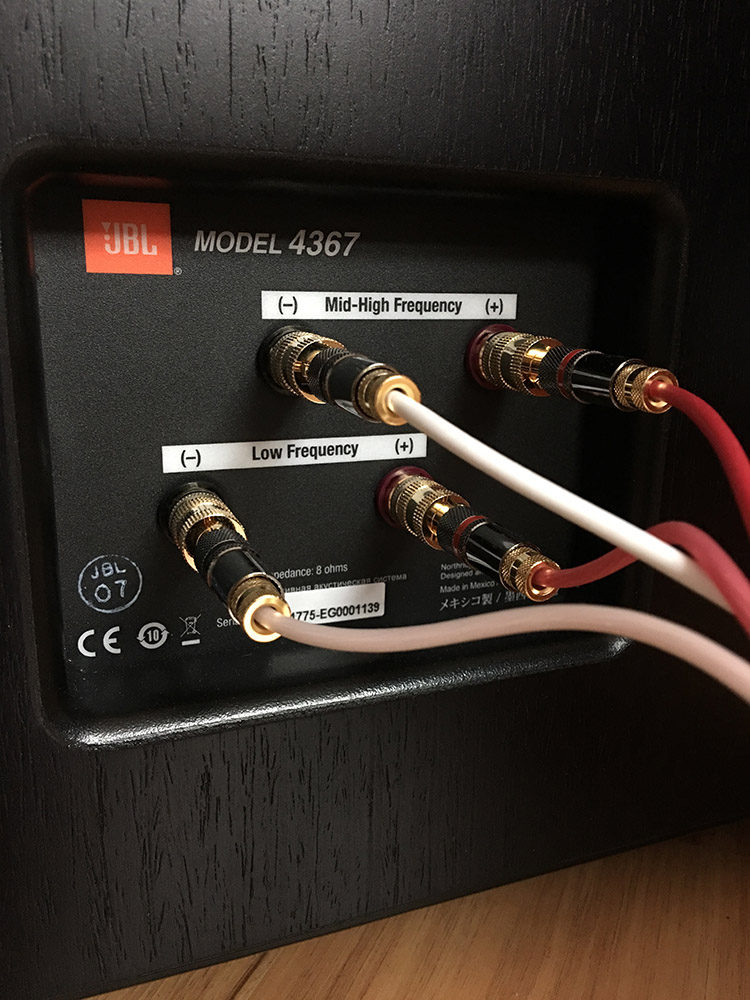Hmmm. I think the other way 'round on that.
I'm quite young and inexperienced when it comes to this hobby. I'm not claiming either or is right or wrong, I was simply reporting back my overall gut feeling regarding the matter. Regardless, I will try both. I appreciate your input.
I was taking time to read my manual for my speakers and I realized something. Are the dual binding posts on the back not actually for bi amping? I was under the impression that removing the jumper connecting the two sets of terminals allows for one to connect to the woofer and tweeter separate. But reading the manual it seems to suggest that this is only a bi-wiring solution.
"BI-WIRE CONNECTION: The 4367 connection assembly has two sets of input terminals that are connected by jumper wires. The upper set of terminals is for high-frequency/ultrahigh-frequency drivers, and the lower set of terminals is for the woofer.
This arrangement allows you to bi-wire the speakers using a single stereo power amplifier or two stereo power amplifiers. Bi-wiring can offer sonic advantages and more flexibility in power-amplifier selection over a conventional single-wire connection.
BI-WIRE CONNECTION (continued):
If you’re bi-wiring with two stereo power amplifiers, connect the speakers according to the following illustration.
To bi-wire the 4367, first remove the terminal jumper wires as shown in the illustration."
Bi-wiring is not the same as bi-amping, right? Am I actually NOT bi-amping when I connect a second amp to the HF/tweeter input on the back of my speaker? If so, that would make this whole plan to get a second amp to power the highs extremely pointless, no? I find it difficult to understand how having a second amp hooked up to the HF is simply bi wiring. I don't think I understand how bi-amping and bi-wiring with this particular speaker functions exactly.


